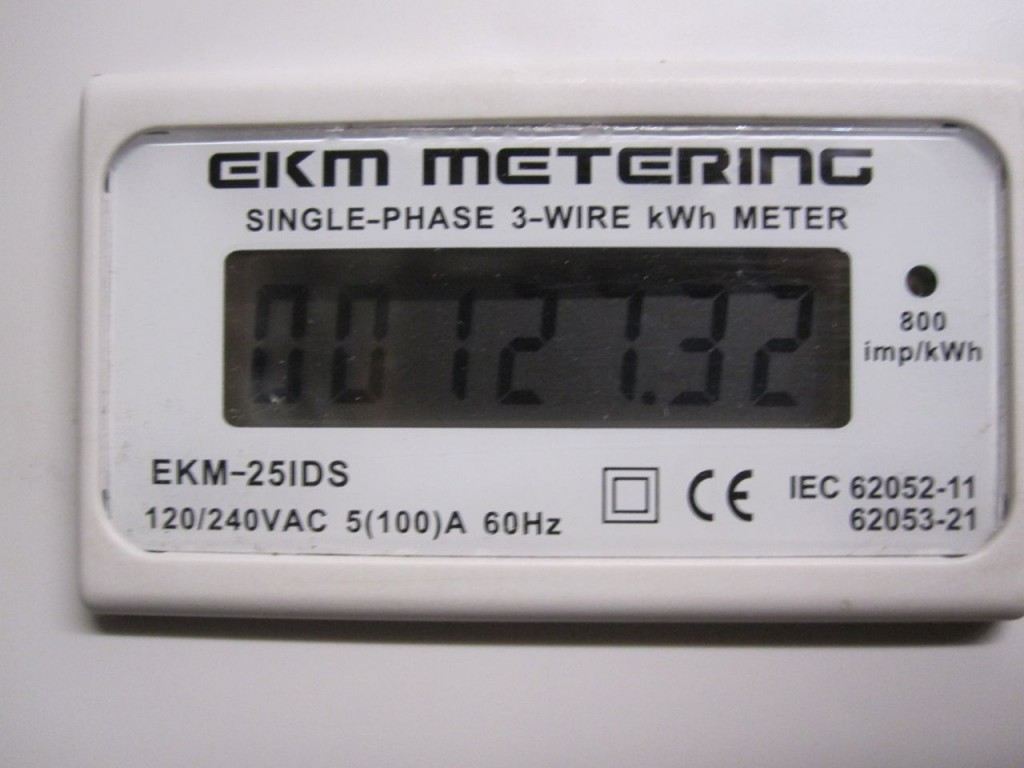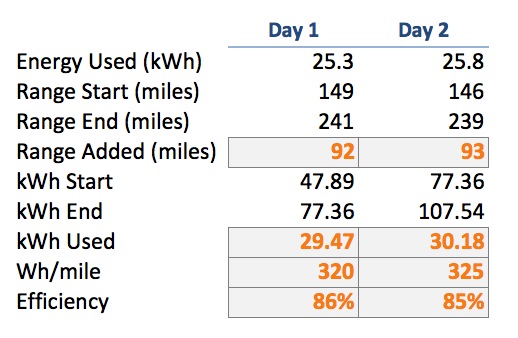Lifestyle
EKM Digital Submeter Measures EV Charging Efficiency

Electric vehicle owners may now know that 10-12% of drawn electricity is lost during the charging process when AC is converted to DC.
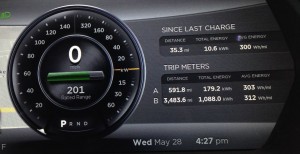 The “Since Last Charge” indicator on the Tesla Model S driver’s console keeps count of distance, energy used and average energy used per mile since the last time you unplugged, but matching this energy consumption to what you’re being billed by your company is more difficult than one might think.
The “Since Last Charge” indicator on the Tesla Model S driver’s console keeps count of distance, energy used and average energy used per mile since the last time you unplugged, but matching this energy consumption to what you’re being billed by your company is more difficult than one might think.
Taking the 10.6kWh Total Energy readout from the dash and multiplying it by my billable electricity rate of $0.1670/kWh, I would think that it costs me $1.77 to drive 35.3 miles. However the actual costs are slightly higher because of the power conversion losses when charging. Charging via a standard 110V wall plug in the US is reported to be much less efficient than a NEMA 14-50 hence you’ll be using even more energy to reach the same state of charge.
Tesla’s charging calculator appears to take into account some of these charging loses. According to the calculator, 35 miles of range added to the Model S requires 11.6kWh of energy although I was able to achieve that with through 10.6 kWh as seen through my dash readout. This could imply a 91% charge efficiency but of course this is a very loose calculation and based on many assumptions such as the speed in which you drive, elevation changes and weather. It’s not simple to calculate how much actual energy you’re using to charge your Tesla Model S.
The EKM Digital Submeter
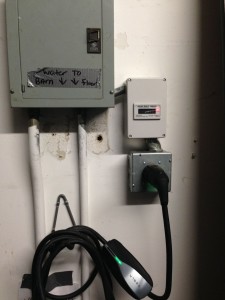 The solution I found was to put a submeter between the EV charge outlet and main power supply. There are many types of meters on the market from basic kWh counters to advanced meters that can broadcast actual use over a wifi network, plot graphs, etc. After doing some extensive research, I decided to go with a metering solution from EKM Metering. My electrician did some independent research and came up with the same brand so I felt pretty good about my choice. I ended up purchasing the 100A kWh EKM digital submeter and enclosure.
The solution I found was to put a submeter between the EV charge outlet and main power supply. There are many types of meters on the market from basic kWh counters to advanced meters that can broadcast actual use over a wifi network, plot graphs, etc. After doing some extensive research, I decided to go with a metering solution from EKM Metering. My electrician did some independent research and came up with the same brand so I felt pretty good about my choice. I ended up purchasing the 100A kWh EKM digital submeter and enclosure.
My electrician was able to complete the installation in 3 hours with a portion of the time spent on retrofitting the EKM enclosure to accommodate for the larger 240v conduit. Total cost spent for products, labor and materials was $292.
How Does it Work?
The EKM submeter is like an odometer but with an energy readout that continuously increments as power is being drawn. There is no reset button. A blinking red light indicates that 1.25Wh is drawn per single blink of the LED.
Measuring actual energy consumed over a specific time period requires taking some notes. Here are the the measurements and results of my tests:
My results indicate that there’s approximately a 85% charging efficiency for my Tesla Model S which is less than the 91% efficiency that Tesla Motors seems to be using in their online calculator.
I’ll be performing several more tests over a longer period of time. I want to look at power draw differences while the Model S is asleep and also analyze variations in energy consumption due to software updates.
Conclusion
Overall the EKM Digital Submeter is a nice addition to any EV charging setup if you’re looking for a true picture of how much energy usage is going into your Tesla Model S / electrical vehicle. Assuming a $0.167/kWh electricity cost and 325 Wh/mile, the cost of the meter plus installation would require 5,380 miles of EV driving to break even.
If you’re looking for a cheaper alternative, simply add 15% to the energy usage readout on your EV to approximate the true energy cost per EV mile driven. Drive clean and drive smart!

Lifestyle
Elon Musk seemingly confirms Cybertruck gift to 13-year-old cancer fighter
Diagnosed in 2018 with a rare form of brain and spine cancer with no cure, the teen has undergone 13 surgeries by the time he was 12.
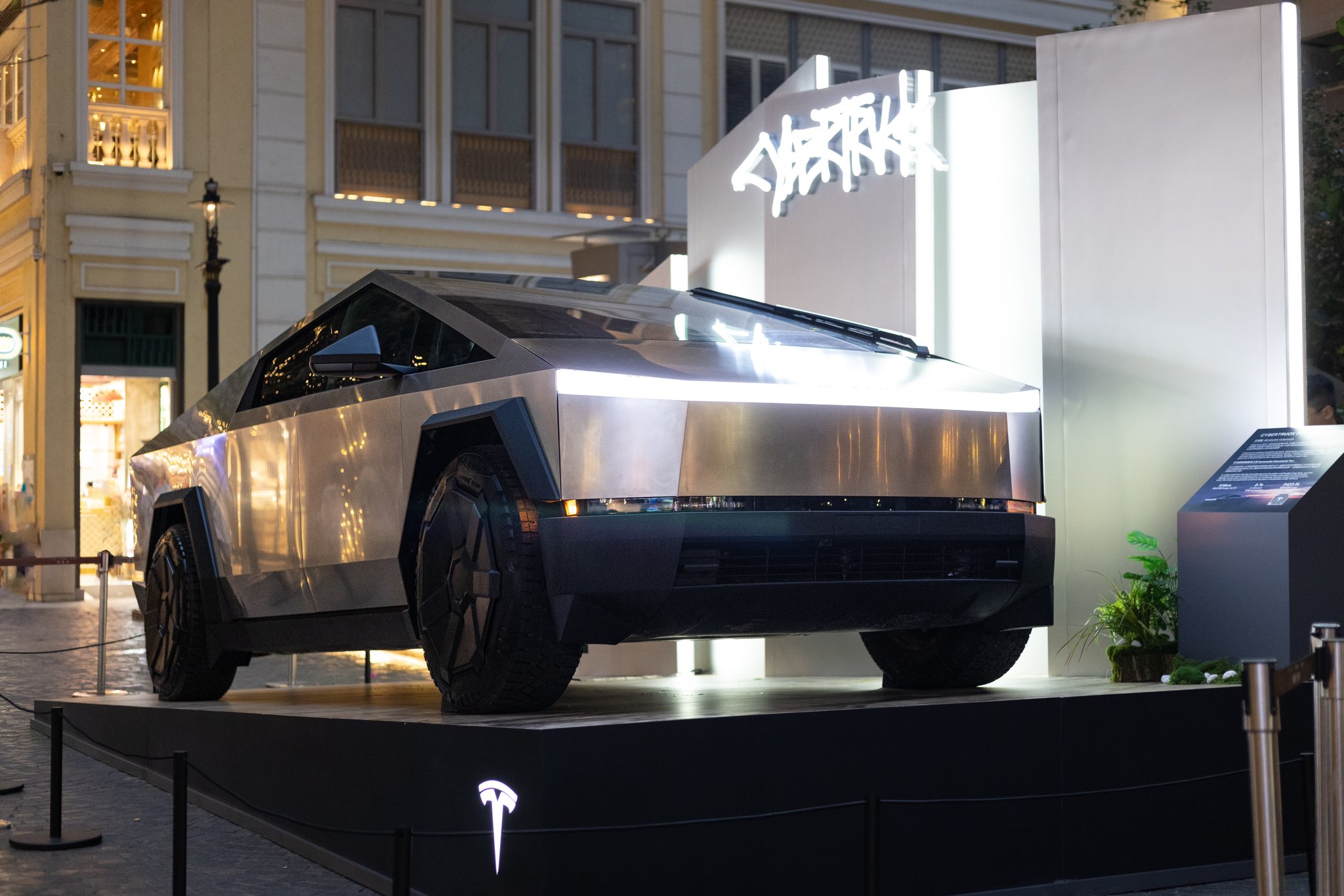
Elon Musk has seemingly confirmed that he will be sending a Tesla Cybertruck to 13-year-old Devarjaye “DJ” Daniel, a 13-year-old Houston boy fighting brain cancer. The teen was recognized as an honorary Secret Service member by U.S. President Donald Trump during his address to Congress on Tuesday.
A Chance Meeting
The Tesla CEO’s Cybertruck pledge was mentioned during DJ’s short interview with CNN’s Kaitlan Collins. When Collins asked the 13-year-old what he told the Tesla CEO, DJ answered that he asked for a Cybertruck.
“I said, ‘can you do me a big favor, when you get back to Houston can you send us a Cybertruck down there?’” the cancer fighter stated.
Daniel noted that Musk responded positively to his request, which was highlighted by Collins in a post on X. Musk responded to the post with a heart emoji, suggesting that he really will be sending a Cybertruck to the 13-year-old cancer fighter.
Teen’s Cancer Battle Inspires
Diagnosed in 2018 with a rare form of brain and spine cancer with no cure, Daniel has undergone 13 surgeries by the time he was 12. During his speech, Trump highlighted the 13-year-old’s long battle with his disease.
“Joining us in the gallery tonight is a young man who truly loves our police. The doctors gave him five months at most to live. That was more than six years ago. Since that time, DJ and his dad have been on a quest to make his dream come true,” Trump stated.
Daniels officially received an honorary badge from U.S. Secret Service Director Sean Curran, to much applause during the event.
Surprisingly Partisan
While Daniels’ story has been inspiring, Trump’s focus on the 13-year-old cancer fighter has received its own fair share of criticism. MSNBC host Nicolle Wallace, while referencing Daniels’ love for law enforcement, noted that she is hoping the 13-year-old never has to defend the U.S. capitol against Trump supporters. “If he does, I hope he isn’t one of the six who loses his life to suicide,” Wallace stated.
Anti-Musk and Trump accounts on X have also thrown jokes at the cancer fighter’s honorary badge, with some dubbing the 13-year-old as a “DEI hire” that should be looked into by DOGE.
Lifestyle
Tesla owner highlights underrated benefit of FSD Supervised
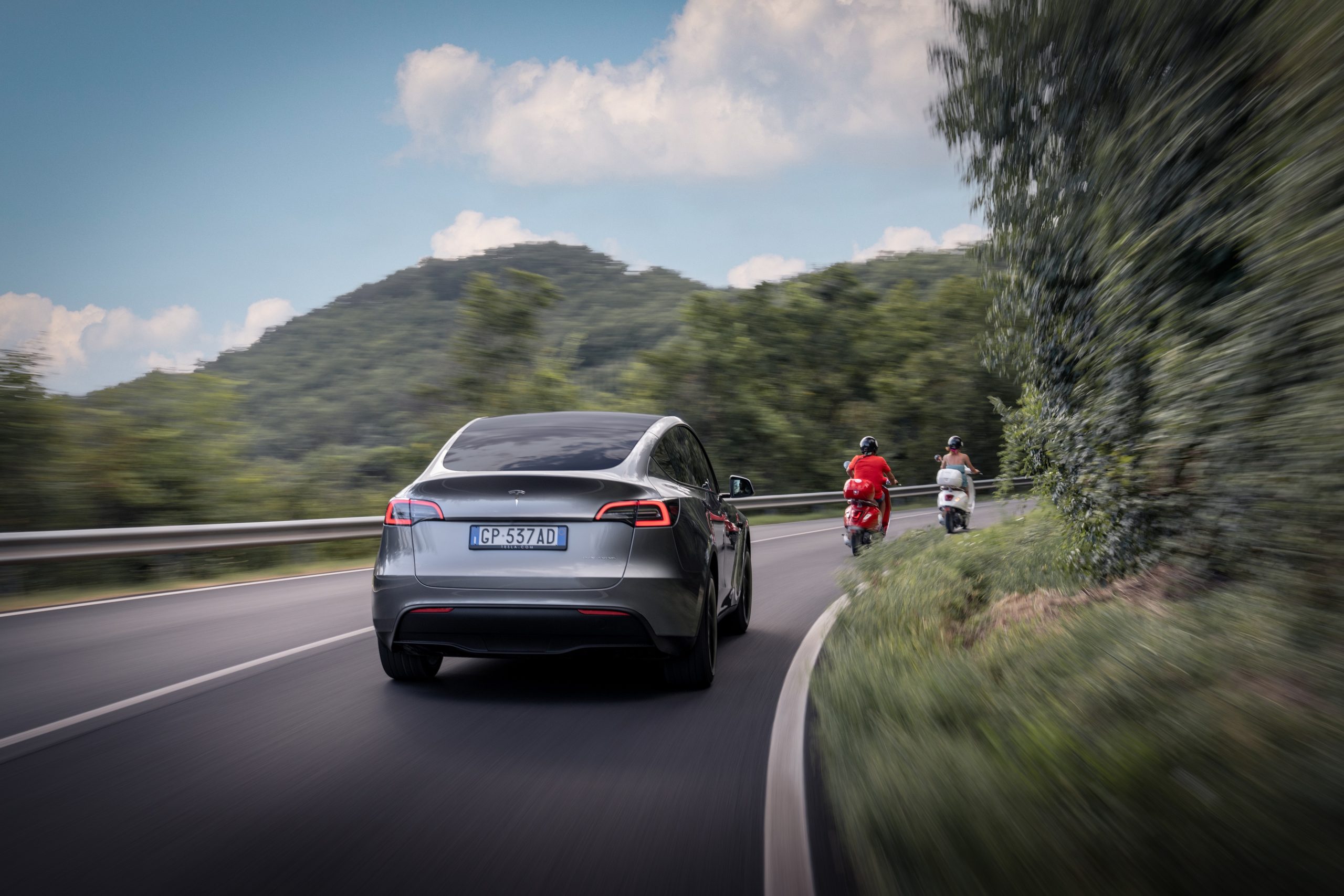
Elon Musk has been pretty open about the idea of FSD being the difference maker for Tesla’s future.
If Tesla succeeds in achieving FSD, it could become the world’s most valuable company. If it doesn’t, then the company would not be able to reach its optimum potential.
FSD Supervised’s safety benefits:
- But even if FSD is still not perfect today, FSD Supervised is already making a difference on the roads today.
- This was highlighted in Tesla’s Q4 2024 Vehicle Safety Report.
- As per Tesla, it recorded one crash for every 5.94 million miles driven in which drivers were using Autopilot technology.
- For comparison, the most recent data available from the NHTSA and FHWA (from 2023) showed that there was one automobile crash every 702,000 miles in the United States.
This morning, Tesla FSD proved to be an absolute godsend. I had to take my brother-in-law to the hospital in Sugar Land, TX, which is 40 miles away, at the ungodly hour of 4 AM. Both of us were exhausted, and he was understandably anxious about the surgery.
— JC Christopher (@JohnChr08117285) January 29, 2025
The convenience of…
FSD user’s tale:
- As per an FSD user’s post on social media platform X, FSD Supervised was able to help him drive a relative to a medical facility safely even if he was exhausted.
- During the trip, the driver only had to monitor FSD Supervised’s performance to make sure the Tesla operated safely.
- In a vehicle without FSD, such a trip with an exhausted driver would have been quite dangerous.
- “This morning, Tesla FSD proved to be an absolute godsend. I had to take my brother-in-law to the hospital in Sugar Land, TX, which is 40 miles away, at the ungodly hour of 4 AM. Both of us were exhausted, and he was understandably anxious about the surgery.
- “The convenience of sending the hospital’s address directly from my iPhone to my Tesla while still inside my house, then just a single button press once inside, and 40 miles later we were precisely in front of the hospital’s admissions area.This experience really underscores just how transformative this technology can be for society,” Tesla owner JC Christopher noted in his post.


Don’t hesitate to contact us with news tips. Just send a message to simon@teslarati.com to give us a heads up.
Lifestyle
Tesla Optimus “stars” in incredible fanmade action short film

There are few things that prove an enthusiast’s love towards a company more than a dedicated short film. This was highlighted recently when YouTube’s SoKrispyMedia posted a 10-minute action movie starring Optimus, Tesla’s humanoid robot, as well as several of the company’s most iconic products.
The video:
- Shot like a Hollywood action flick, the video featured a rather humorous plot involving a group of thieves that mistakenly targeted a Tesla Model 3 driver.
- The Model 3 driver then ended up speaking to Tesla for assistance, and some high-octane and high-speed hijinks ensued.
- While the short film featured several Tesla products like the Model 3, Superchargers, and the Cybertruck, it is Optimus that truly stole the show.
- Optimus served several roles in the short film, from an assistant in a Tesla office to a “robocop” enforcer that helped out the Model 3 driver.
Future Robo-cop @Tesla_Optimus
— SOKRISPYMEDIA (@sokrispymedia) January 12, 2025
full video: https://t.co/TXpSRhcP5K pic.twitter.com/YFHZ7siAP7
Cool inside jokes:
- The best Tesla videos are those that show an in-depth knowledge of the company, and SoKrispyMedia definitely had it.
- From the opening scenes alone, the video immediately poked fun at TSLA traders, the large number of gray Tesla owners, and the fact that many still do not understand Superchargers.
- The video even poked fun at Tesla’s software updates, as well as how some Tesla drivers use Autopilot or other features without reading the fine print in the company’s release notes.
- The video ended with a tour de force of references to Elon Musk products, from the Tesla Cybertruck to the Boring Company Not-a-Flamethrower, which was released back in 2018.
Check out SoKrispyMedia’s Tesla action short film in the video below.
Don’t hesitate to contact us with news tips. Just send a message to simon@teslarati.com to give us a heads up.
-

 Elon Musk2 weeks ago
Elon Musk2 weeks agoElon Musk roasts owners of this car brand after another Tesla vandalism incident
-

 News1 week ago
News1 week agoTesla aiming to produce first “legion” of Optimus robots this 2025
-

 Elon Musk6 days ago
Elon Musk6 days agoTesla CEO Elon Musk’s simple message to vandals
-
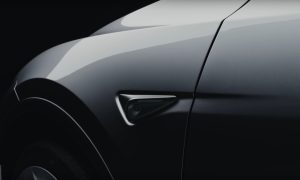
 Elon Musk2 weeks ago
Elon Musk2 weeks agoElon Musk confirms two measures Tesla is taking to fight vandalism
-

 News2 weeks ago
News2 weeks agoSpaceX rescue mission for stranded ISS astronauts nears end — Here’s when they’ll return home
-

 News1 week ago
News1 week agoTesla’s Giga Berlin director responds to anti-Musk criticism
-
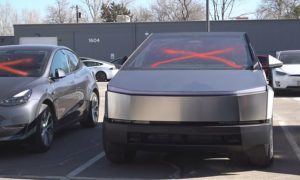
 Elon Musk2 weeks ago
Elon Musk2 weeks agoTesla owners doxxed by controversial anti-DOGE website in clear intimidation tactic
-

 Elon Musk1 week ago
Elon Musk1 week agoElon Musk to file lawsuit against former US Rep Jamaal Bowman: “I’ve had enough”
